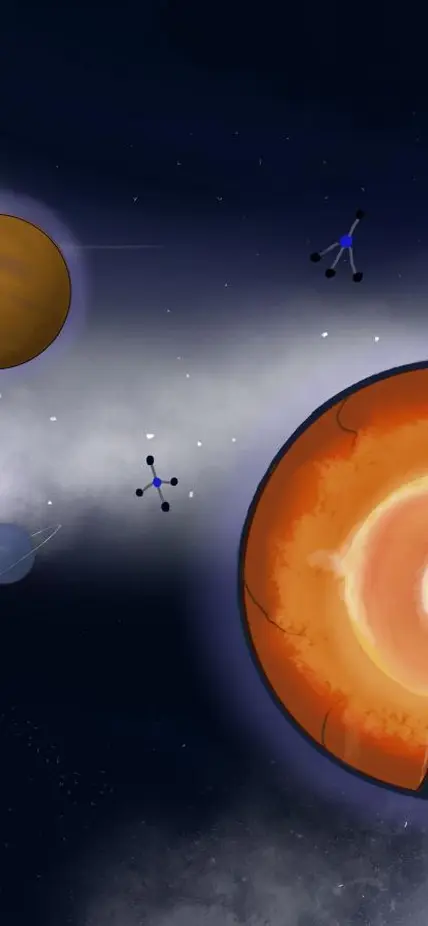Carnegie’s Earth and Planets Laboratory welcomes two new staff scientists whose expertise spans from terrestrial planet interiors to the atmospheres of distant worlds.
Anne Pommier arrived this month from U.C. San Diego’s Scripps Institution of Oceanography, where she investigated the evolution and structure of planetary interiors, including our own Earth and its Moon, as well as Mars, Mercury, and the moon Ganymede. Peter Gao will join in September from U.C. Santa Cruz, where he studies the chemistry occurring in the atmospheres of Venus, Mars, Pluto, Saturn’s moon Titan, as well as exoplanets.
Pommier’s experimental petrology and mineral physics work will be an excellent addition to Carnegie’s longstanding leadership in lab-based mimicry of the conditions found deep inside Earth and other rocky planets.
She uses high-pressure, high-temperature laboratory techniques to understand the role of molten material in planetary interiors over deep time—from the full-scale magma oceans that played a crucial role in Earth’s evolution to the formation of our planet’s core and the magma reservoirs that lurk under active volcanoes. She collaborates regularly with geophysicists, planetary scientists, geodynamicists, and field petrologists to better interpret her laboratory data, in particular the electrical properties of silicates and metals, and constrain the questions she is probing in her research.
Pommier received her Ph.D. in experimental petrology from the University of Orléans in France and an engineering degree from Polytech'Orléans. She did her undergraduate work in volcanology at Polytech'Orléans and the National Institute of Geophysics and Volcanology in Palermo, Italy. She is leaving a tenured position as an associate professor at Scripps and has also served as an adjunct professor at the Woods Hole Oceanographic Institution, a visiting scientist at the Lunar and Planetary Institute, and in postdoctoral positions at Arizona State University and MIT.
For decades, Carnegie has been a powerhouse in exoplanet discovery and research. Gao’s arrival will continue this tradition as the field prepares for an onslaught of new data about exoplanetary atmospheres when the next generation of telescopes come online.
He has been a part of several exploratory teams that investigated sulfuric acid clouds on Venus, methane on Mars, and the atmospheric hazes of Pluto. He also creates models that apply knowledge of photochemistry and cloud physics to help characterize the atmospheres of exoplanets and brown dwarfs, which are sometimes called failed stars, because they are not able to sustain hydrogen fusion.
Gao earned his Ph.D. in planetary science from Caltech and spent a year as a NASA Postdoctoral Program Fellow at NASA Ames Research Center, three years at UC Berkeley as a 51 Pegasi b Postdoctoral Fellow, and one year at UC Santa Cruz as a NHFP Sagan Postdoctoral Fellow. His bachelor’s degree in physics is from the University of British Columbia, Canada.
“Carnegie’s Earth and Planets Laboratory is working toward a holistic understanding of the raw materials from which Earth and our Solar System’s planets were born, the evolution of our planet’s geologic processes, and how this knowledge can inform the search for other potentially habitable worlds,” said Director Richard Carlson. “Since the inception of these fields, Carnegie has been a leader in probing planetary interiors using innovative laboratory techniques and in discovering and characterizing exoplanets. New additions like Anne and Peter will allow us to stay on the cutting edge. We are thrilled to have them join us.”
